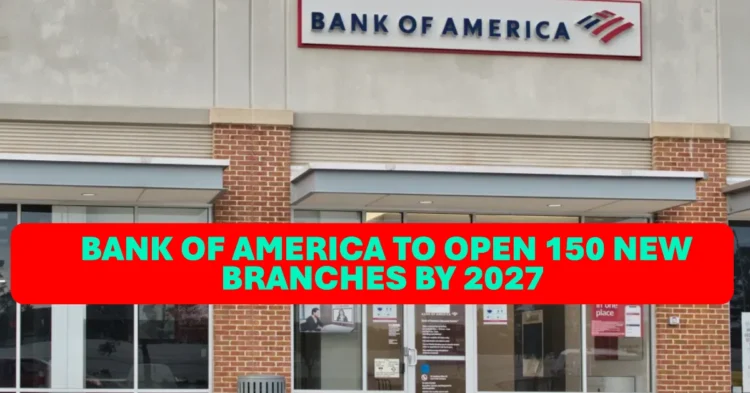In an era dominated by apps, online transfers, and AI chatbots, Bank of America is making a bold move: it plans to open more than 150 new physical branches across the United States by the end of 2027. That’s right—instead of cutting back on brick-and-mortar locations like many of its competitors, Bank of America is doubling down on face-to-face banking.
The initiative is part of a massive $5 billion investment to bring banking back to the streets, prioritizing customer experience and local presence.
Table of Contents
Why Physical Branches Still Matter
A Human-Centered Banking Experience
Holly O’Neill, president of Consumer and Preferred Banking at Bank of America, shared the strategy behind this initiative: to meet customers where they are—digitally or in person. Many clients still value walking into a branch, sitting down with an advisor, and getting personalized financial advice without screens or time constraints.
This expansion reflects a renewed commitment to restoring the human connection in financial services, a move that feels almost revolutionary in today’s screen-first culture.
Manhattan’s Star Branch: Inspired by Bryant Park
At the heart of this rollout is a flagship branch in Manhattan, designed to break the mold of traditional banking spaces. The branch will channel the relaxed, artistic energy of Bryant Park—with cozy seating areas, communal tables, and decor by a local New York artist.
This space isn’t just about transactions—it’s about community, conversation, and creativity.
Idaho Joins the Network: A First for Bank of America
Bank of America is also planting its flag in new territory—Idaho, to be specific. The bank has never had a physical presence in the state, but that’s changing fast. Four financial centers are scheduled to open in the Boise area, with the first location launching in Nampa on June 9.
Will Smayda, director of financial centers, emphasized that this isn’t just about banking—it’s about jobs, growth, and forming long-term connections with new communities.
Over a Decade of Steady Expansion
This isn’t a sudden shift. Since 2014, Bank of America has been quietly and steadily growing its physical footprint. In just the past decade, the bank has:
- Entered 11 new markets (the latest being Louisville in 2024)
- Opened 471 branches in existing markets since 2016
- Renovated more than 3,000 branches just last year
- Plans another 500 renovations in the next two years
Art Meets Banking: A Commitment to Inclusion
Many of these newly renovated and opened branches feature artwork by artists with disabilities or those experiencing homelessness, thanks to a partnership with ArtLifting. Currently, over 1,600 financial centers showcase these meaningful works, adding not just aesthetic value, but a sense of purpose and connection.
This artistic touch is more than decor—it’s a testament to Bank of America’s ongoing social responsibility and inclusive values.
Breaking Barriers with ASL Access
In another move toward inclusivity, Bank of America has launched American Sign Language (ASL) interpretation services in all of its branches. Using a simple QR code, customers can connect to live ASL interpreters via video. It’s a step forward in ensuring no customer is left behind, regardless of communication needs.
Bank of America Confirms Branch Closures Full List of Affected Locations Released
$2.85M Settlement Reached in Bank of America EIPA Class Action
Bank of America Massive Branch Closures 2024: List & Reason Behind
$2.85M Settlement Reached in Bank of America EIPA Class Action
Bridging Digital and In-Person Banking
While this expansion emphasizes in-person services, Bank of America hasn’t turned its back on digital innovation. With digital access reaching nearly 250 million people in over 200 markets, and with more than 10 million appointments made digitally last year alone, the bank is thriving in both spaces.
The key takeaway? Digital convenience doesn’t have to mean the end of human connection.
Final Thoughts: A New Era of Banking that Blends High-Tech with High-Touch
Bank of America’s branch expansion is more than a business move—it’s a statement. In a world where digital often replaces dialogue, this initiative brings balance, offering customers the best of both worlds.

